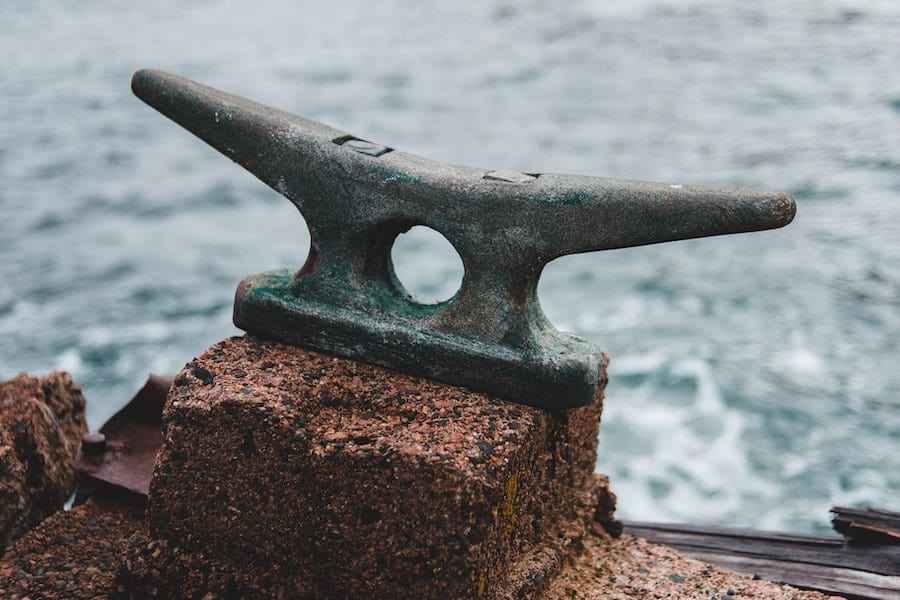Welcome to the world of anvils, a time-honored tool that has stood the test of centuries. From the dawn of civilization to the modern era, anvils have played a crucial role in shaping the world we know today. Symbolizing craftsmanship, strength, and tradition, these unyielding metal blocks have been integral to the evolution of various industries, leaving an indelible mark on history. In this article, we will delve into the captivating history of anvils, explore their traditional uses in blacksmithing and metalwork, and venture into the remarkable ways they continue to thrive in the contemporary world, proving that some tools truly stand the test of time.
What Is An Anvil Used For?
An anvil is a heavy and sturdy metal tool primarily used in blacksmithing and metalworking. Its flat surface and horned shape allow artisans to shape, forge, and manipulate metals with precision and control. The blacksmith typically hammers hot metal against the anvil’s surface to achieve desired shapes and forms, such as crafting tools, weapons, and artistic metalwork. Anvils have been an integral part of human history, and even in the modern era, they continue to find applications in various industries, ranging from traditional blacksmithing to specialized manufacturing processes and even artistic pursuits like jewelry making and silversmithing.
Traditional Uses Of Anvils
Traditional anvils have been indispensable tools in various industries throughout history. Some of their traditional uses include:
Blacksmithing and Metalworking: Perhaps the most iconic and well-known use of anvils is in blacksmithing. Blacksmiths use the anvil’s flat surface and horned ends to forge and shape hot metal. By striking the metal against the anvil with hammers and other tools, blacksmiths can bend, twist, and form the metal into a wide range of objects, including horseshoes, tools, weapons, and decorative pieces.
Coin Minting and Metal Currency Production: Anvils have been historically used to produce coins and metal currency. Coin minters would use the anvil to strike the metal blanks or planchets with engraved dies to create uniform and standardized coins for trade and commerce.
Armor and Metal Armor-Making: Anvils played a significant role in producing armor and metal armor for soldiers and knights. Blacksmiths would shape metal plates, rivet them together, and add intricate details to create protective suits of armor.
Bladesmithing and Knife Making: In bladesmithing, anvils are essential for shaping and tempering knives and other bladed weapons. The flat surface of the anvil is used to flatten and straighten the metal, while the horned ends help shape curves and edges.
Artistic Metalwork: Anvils are also vital in artistic metalwork, where skilled artisans use them to craft intricate and decorative metal pieces. This includes creating elaborate gates, railings, sculptures, and other artistic expressions in metal.
General Metal Forming and Repair: Anvils serve as versatile metal-forming tools, enabling metalworkers to perform various repairs, modifications, and fabrications. They are utilized in bending, twisting, and straightening metal pieces to achieve specific shapes and dimensions.
The Enduring Role Of Anvils In Various Industries
Anvils have played an enduring and significant role in various industries, even in the face of modern technological advancements. Some of the industries where anvils remain indispensable include:
Blacksmithing And Metalworking:
The traditional use of anvils in blacksmithing and metalworking continues to thrive. Skilled blacksmiths and metalworkers rely on anvils to shape, bend, and form metals with precision and control, preserving the artistry and craftsmanship passed down through generations.
Manufacturing And Industrial Applications:
In modern manufacturing processes, anvils are still essential for precision engineering and metal forming. From large-scale metal fabrication to specialized industries like aerospace and automotive, anvils help create complex shapes and ensure quality results in metal components and parts.
Artisanal Crafts And Artistic Metalwork:
Anvils hold a special place in the hearts of artisans and artists who create unique, handcrafted metal pieces. From ornate gates and railings to sculptures and decorative artwork, anvils remain a crucial tool for shaping and forming metal into beautiful and intricate designs.
Bladesmithing And Knife Making:
Bladesmiths and knife makers continue to rely on anvils for shaping and tempering blades and knives. The durability and stability of anvils make them ideal for achieving the necessary strength and edge retention in high-quality blades.
Niche And Specialized Fields:
Anvils find applications in various niche fields, such as traditional armor-making, antique restoration, and musical instrument manufacturing. The versatility of anvils allows them to adapt to unique requirements in these specialized industries.
Education And Traditional Skills Preservation:
Anvils play a vital role in educational settings, where they are used to teach traditional blacksmithing and metalworking skills. By passing down these crafts to future generations, anvils help preserve cultural heritage and the knowledge of ancient techniques.
The Role Of Anvils In Modern Industries
In modern industries, anvils have a significant role and find applications in various fields, showcasing their versatility and enduring relevance. Some of the critical roles of anvils in modern industries include:
Anvils are crucial in precision engineering and metal forming processes. From manufacturing components for machinery to creating specialized parts for high-tech applications, anvils provide a stable and reliable surface for shaping and manipulating metals with accuracy.
In the aerospace and automotive sectors, where precision and structural integrity are paramount, anvils play a vital role in shaping and forming metal components for aircraft, vehicles, and other advanced technologies.
Even in the modern era, artistic metalwork remains in demand. Anvils are indispensable tools for metal artists and artisans who create intricate and decorative pieces, from modern sculptures to bespoke metalwork for architectural projects.
The jewelry industry continues to utilize anvils for crafting intricate pieces made of precious metals. Whether it’s creating delicate rings or intricate pendants, anvils provide the necessary support for shaping and forming these beautiful items.
The popularity of custom knives and blades has surged recently, leading to a resurgence in bladesmithing. Anvils are essential in this process, allowing bladesmiths to forge, shape, and temper high-quality blades for various applications.
Anvils also find applications in emerging technologies like 3D printing and additive manufacturing. They can be used in post-processing to shape further and refine metal 3D-printed objects, ensuring precise dimensions and finishes.
Anvils continue to play a role in educational settings, where they are used to teach traditional blacksmithing and metalworking skills, as well as modern engineering techniques. These tools help foster hands-on learning and the development of practical expertise.
Final Words
In conclusion, the humble anvil, with its roots deeply embedded in history, remains a timeless and indispensable tool in various industries. From the ancient art of blacksmithing to the cutting-edge realms of aerospace and 3D printing, the enduring role of anvils showcases their adaptability and value in the ever-evolving world of craftsmanship and technology. As we celebrate the artistry and tradition preserved through anvils, let us also embrace the innovation and creativity they inspire in modern industries. These sturdy metal blocks continue to bridge the past with the present, connecting artisans and engineers in their pursuit of excellence.
FAQ’s
Q: What is an anvil used for in blacksmithing?
A: Anvils serve as essential tools in blacksmithing, providing a sturdy surface for shaping and forging hot metal into various objects, such as tools, weapons, and decorative pieces.
Q: Can anvils be used in modern manufacturing processes?
A: Absolutely! Anvils play a significant role in modern industries, supporting precision engineering, metal forming, and specialized manufacturing processes, including aerospace and automotive applications.
Q: Are anvils still relevant in artisanal crafts and artistic metalwork?
A: Yes, anvils remain invaluable in artisanal crafts and artistic metalwork. They are instrumental in creating intricate designs, sculptures, jewelry, and other decorative metal pieces.




















Leave a Reply